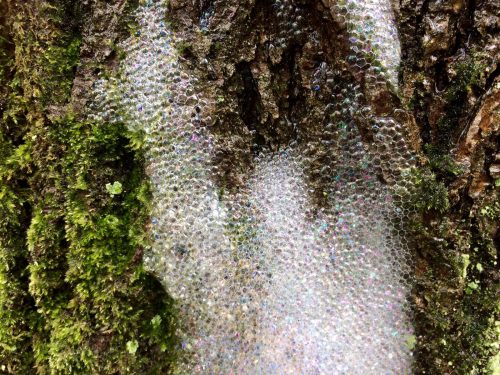Tree foam, in early spring, damage in the bark was caused by night frost.
Do not confuse with:
Hair ice
Tree foam In early spring, night frosts caused damage in the bark. The water pressure in the tree not only pushes tree sap (water enriched with saponins) towards branches and leaves, but also sap out through the damaged bark, where foam forms. Saponin is a soapy substance that trees deploy to ward off insects. In contact with rain and outside air (oxygen), saponin foams.
The rougher the trunk, the greater the risk of damage by frost.
Tree foam forms in early spring during periods of heavy rain during the day and light frost at night. It is a relatively rare phenomenon.
Tree foam is not always harmless: combined with the appearance of insects, it may indicate infestation by the Dark Honey Fungus (Armillaria ostoyae). This fungus (mushroom) attacks the tree, upon which the tree, to prevent further infestation, closes its capillaries. The sugary tree sap then comes out through the bark and attracts insects. By closing off the capillaries, the tree dries out and will eventually die.

